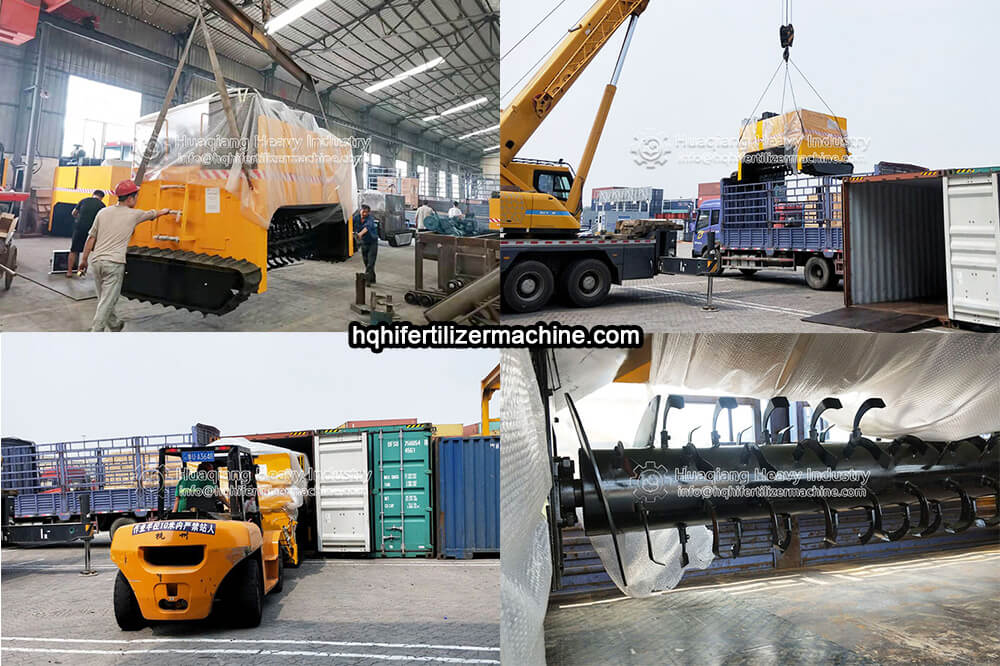
1. Adjusting Turning Depth
The turning depth of a windrow compost turning machine directly affects compost quality and energy use. Adjust it based on the material:
Common livestock manure: Suggested depth: 1.2 to 1.5 meters.
Straw-based materials: Can be increased to 1.8 meters.
Wet, sticky materials: Reduce to 0.8 to 1.2 meters.
Increase depth slightly in summer to help bottom material ferment. Reduce depth in winter to help surface material heat up faster.
2.Optimizing Travel Speed
Travel speed affects turning frequency and mixing:
Fresh raw materials: 0.8 to 1.2 meters per minute (for thorough mixing).
High-temperature fermentation phase: 1.5 to 2 meters per minute (to boost aeration).
Curing phase: 0.5 to 0.8 meters per minute (to reduce moisture loss).
Adjust speed in steps no larger than 0.3 m/min. After adjusting, check how loose the material is and monitor temperature changes.

3.Adjusting Track Tension
Track tension affects windrow compost turning machines stability and track life:
Standard tension: The middle of the track should sag 3-5 cm when pressed down.
New tracks: Re-tighten after the first 8 hours of operation.
Checking tension: Measure gaps between track plates with a straight edge.
Tighten slightly during rainy seasons to prevent slipping. Loosen slightly during long storage to avoid track deformation.
4.Fine-Tuning Working Angle
The windrow compost turning machine's working angle affects how material is turned and moved:
Flat ground: Keep level (0°).
Sloped ground: Adjust to a 3-5° tilt.
Windrow composting: Can be set to 8-10° for better material discharge.
Always do a test run without load after adjusting the angle. Only start production after confirming everything works normally.